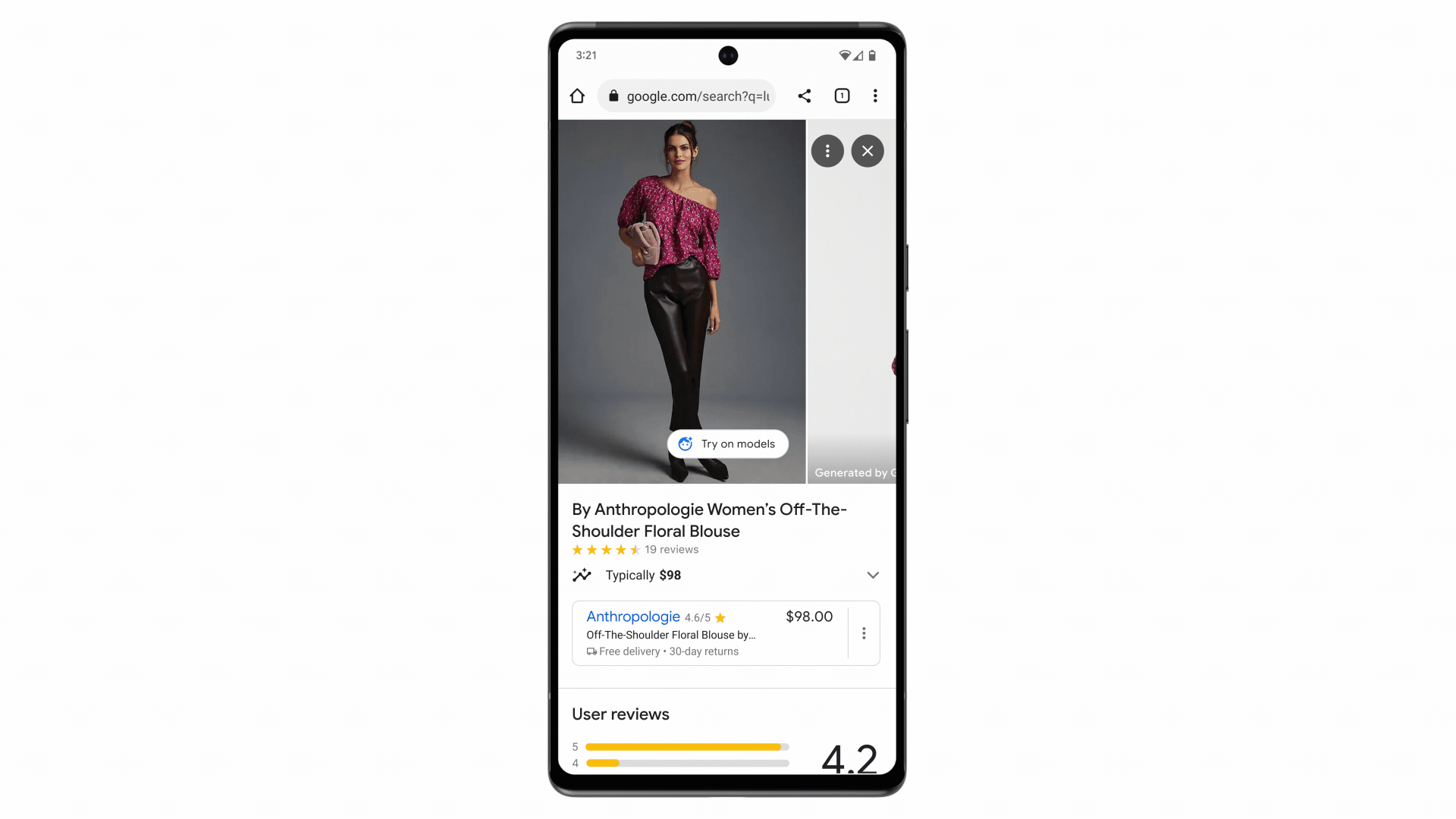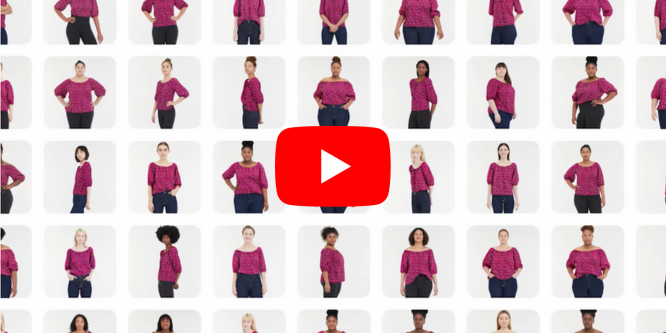
Image Source: Google
Google has introduced a virtual try-on tool for apparel, tapping generative artificial intelligence (AI) that it believes is leaps ahead of avatar- or photo-upload-driven try-on models.
Google photographed people ranging in sizes from XXS to 4XL across different skin tones, body shapes, ethnicities and hair types to create a diffusion-based neural network.
The diffusion process gradually adds extra pixels, or “noise,” to an image until it becomes unrecognizable, then removes the noise until the original image is reconstructed. Unlike traditional diffusion methods that rely on text input, Google’s approach pairs two images: the garment against a person.
“Each image is sent to its own neural network (a U-net) and shares information with each other in a process called ‘cross-attention’ to generate the output: a photorealistic image of the person wearing the garment,” said Ira Kemelmacher-Shlizerman, Google’s senior staff research scientist, Shopping, in a blog entry.

Google’s Shopping Graph, which has about 40 billion product listings, then trains the AI model using millions of random images of different garments on people in varied poses.
Google’s AI-driven virtual try-on model “can take just one clothing image and accurately reflect how it would drape, fold, cling, stretch and form wrinkles and shadows on a diverse set of real models in various poses,” Lilian Rincon, Google’s senior director of product, Shopping, said in a separate blog entry.
Select apparel from H&M, Loft, Everlane, and Anthropologie is currently accessible to customers through a “Try On” badge at Google’s shopping search.
Mr. Kemelmacher-Shlizerman sees limitations in virtual try-on techniques like geometric warping that can cut and paste and then deform a clothing image to fit a silhouette. “Clothes don’t realistically adapt to the body, and they have visual defects like misplaced folds that make garments look misshapen and unnatural,” he said.
Walmart last year launched a technology enabling online shoppers to see how their apparel selections looked via a selected avatar as well as through an uploaded photo of themselves. Denise Incandela, EVP, Apparel and Private Brands, Walmart U.S., said at the time, “We believe the largest and closest store to our customers is the one in their pockets.”



Leave a Reply
You must be logged in to post a comment.